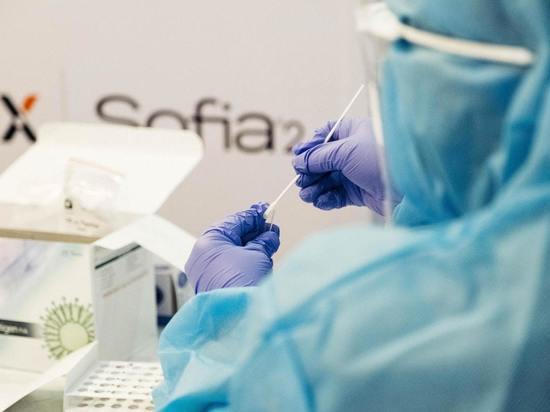Scientists have established the true ways of transmission of coranavirus: the picture has changed
[ad_1]

Not all protective measures that were taken before were correct
The pandemic is about to turn three years old, and scientists are only now beginning to understand how the coronavirus is actually transmitted. But this knowledge plays a decisive role in the spread of infection. Why so much has been done wrong so far, what consequences it has led to and what urgently needs to be changed, scientists told in a sensational investigation published in the British Medical Journal.
According to the authors of the publication, at the beginning of the pandemic, the erroneous opinion took root that SARS-CoV-2 was transmitted by droplets, and not by airborne droplets. It would seem – what’s the difference? But it is there, and very significant. As the well-known therapist Aleksey Vodovozov explains, the boundary between them runs along the diameter of the particles emitted into the surrounding reality: up to 5 microns is an aerosol path, 5 and above is a droplet.
Droplet transmission suggests that virus particles can remain on surfaces and even live on them for a while. Remember, there were many studies on how many hours and even days a virus can survive on different materials?
Based on this knowledge, epidemiologists developed measures to prevent transmission of infection, including frequent washing of hands and treating them with antiseptics to holes in the skin, cleaning surfaces and physical distancing (the length of social distance constantly varied from one meter to six, and eventually agreed on one and a half -two meters). Protective screens and visors appeared in public places. Medical workers had to dress in harsh protective suits and wear diapers.
In addition, we were categorically not recommended to shake hands and touch our faces, which, as it turns out, were completely unnecessary. At least as far as covid is concerned.
Meanwhile, measures to reduce transmission of infection by airborne droplets are slightly different. They focus on improving indoor air quality, reducing crowding and time spent in confined spaces, and high-quality respiratory protection. More specifically, ways to reduce airborne transmission of infections include ventilation and air filtration, telecommuting, distance learning, wearing masks indoors, and high-quality, ideally medical respirators.
Another important point: “airborne” viruses are very well transmitted in rooms where they sing, have frequent conversations and play sports. Well, if we talk about health workers, then with this transmission route, the most important thing is high-quality face protection, and not at all suits.
However, these measures were not emphasized in the first months of the pandemic, which, according to the authors of the publication, led to tragic consequences: high mortality in nursing homes, a critical delay in the introduction of masks and preventable infections of healthcare workers. The World Health Organization has ignored, and sometimes outright denied, airborne transmission of SARS-CoV-2 for more than two years, despite early evidence indicating that this is an important and possibly dominant route of transmission. As a result, misconceptions about SARS-CoV-2 transmission have taken root and led to misguided policies and avoidable deaths.
Residents of nursing homes were dying by the thousands. Between March and June 2020, there were 18,104 COVID-19-related deaths and 11,169 additional deaths among UK nursing home residents, above the five-year UK average. Meanwhile, in Hong Kong, which mandated the wearing of medical masks for all nursing home employees by the end of January 2020, and in the first wave of COVID-19 (from March to June 2020), there were no deaths in nursing homes.
The authors note that a lot of data points to the airborne route of transmission of the virus: super-distribution (there were many cases of infection during mass events from one or more people); transmission over long distances; asymptomatic and presymptomatic transmission (most people who transmit the virus do not have any symptoms at that time); indoor dominance (transmission of the virus is many times higher indoors than outdoors, and ventilation reduces transmission), etc.
As the pandemic continues to cause death and long-term illness more than 30 months after it began, the ways in which SARS-CoV-2 is transmitted and the measures needed to combat it remain unclear and underestimated. There was a recent UK investigation into the mistakes made during the pandemic, but it did not mention masks and ventilation at all. The authors of the publication in the British Medical Journal urge to take these factors into account and bring all those responsible to justice.
“Many studies have already proven that high-grade respirators have become perhaps the most effective way to contain the spread of infection. However, the Russians, even during the introduction of the mask regime, tried in every possible way not to comply with it, and as soon as it was canceled, they completely relaxed. It is unlikely that our situation is better than in Britain, rather, it is much worse, but somehow no one is in a hurry to investigate it, ”a doctor from one of the Moscow hospitals told MK.
[ad_2]
Source link








